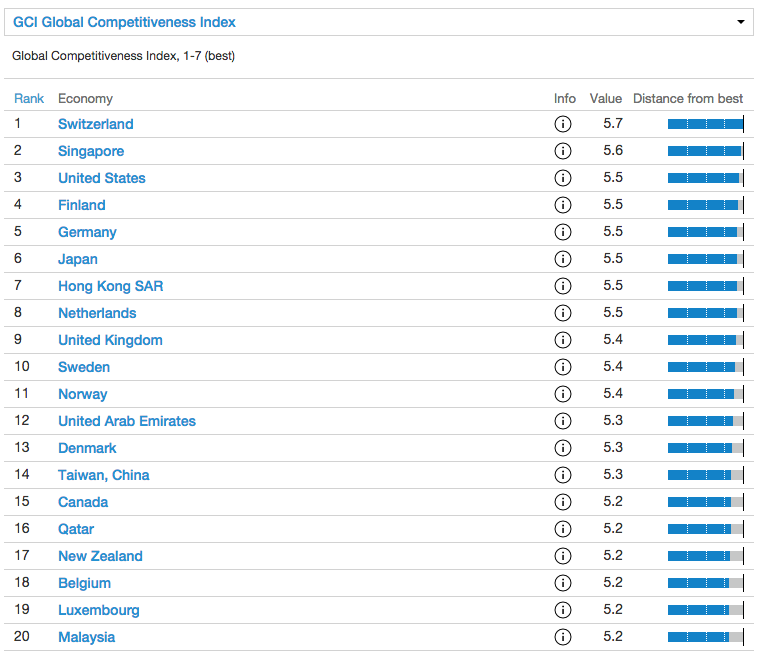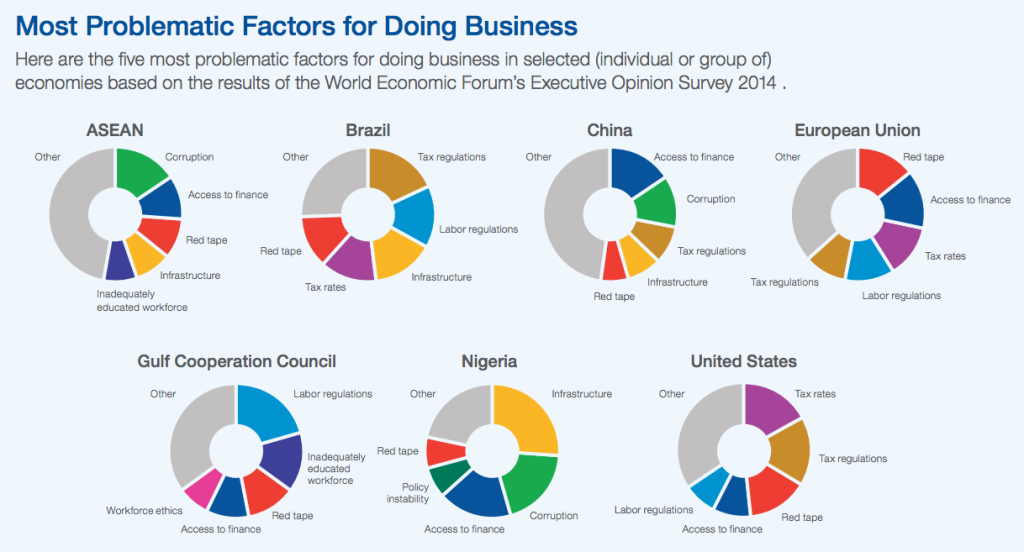For Global Competitiveness, Enable Women
The World Economic Forum (WEF) just released its 2014-2015 Global Competitiveness Report, an assessment of the competitive performance of 144 economies.
The report ranks the world’s economies using twelve “pillars” which include institutions, infrastructure, health and education, labour market efficiency, technological readiness, innovation and business sophistication. This year’s report focused in particular on innovation and skills.
All ten of the most competitive economies are advanced economies. The highest ranked emerging economy was the UAE, which came in at number twelve. Overall, emerging economies around the world had mixed results and were forecasted to grow more slowly due to several factors including lower commodity prices and the outflow of capital.
Additionally, in its report, the WEF said that emerging economies for the most part did not use the period of high growth they recently enjoyed to implement the structural reforms needed to increase productivity and build competitiveness. Needed reforms are listed in three areas: 1) increasing competition, especially in strategic sectors of the economy, by removing bottlenecks and barriers to entry; 2) improving the efficiency of public institutions, which is also crucial to ensure; and 3) making the labor markets more flexible and more effective at using all existing talent.
One Solution for Emerging Economies
To increase their competitiveness and growth rates, emerging economies need more inclusive growth that fully leverages their working age populations.
Political, legal, economic or societal barriers that prevent women — especially ambitious, educated women — from fully participating in the labor market reduce the availability of talent to employers. Promoting gender parity will increase emerging economies’ talent pools and create productive jobs. Empowering and enabling women will reduce poverty and conflict. The economic participation of women will boost global competitiveness and growth!

